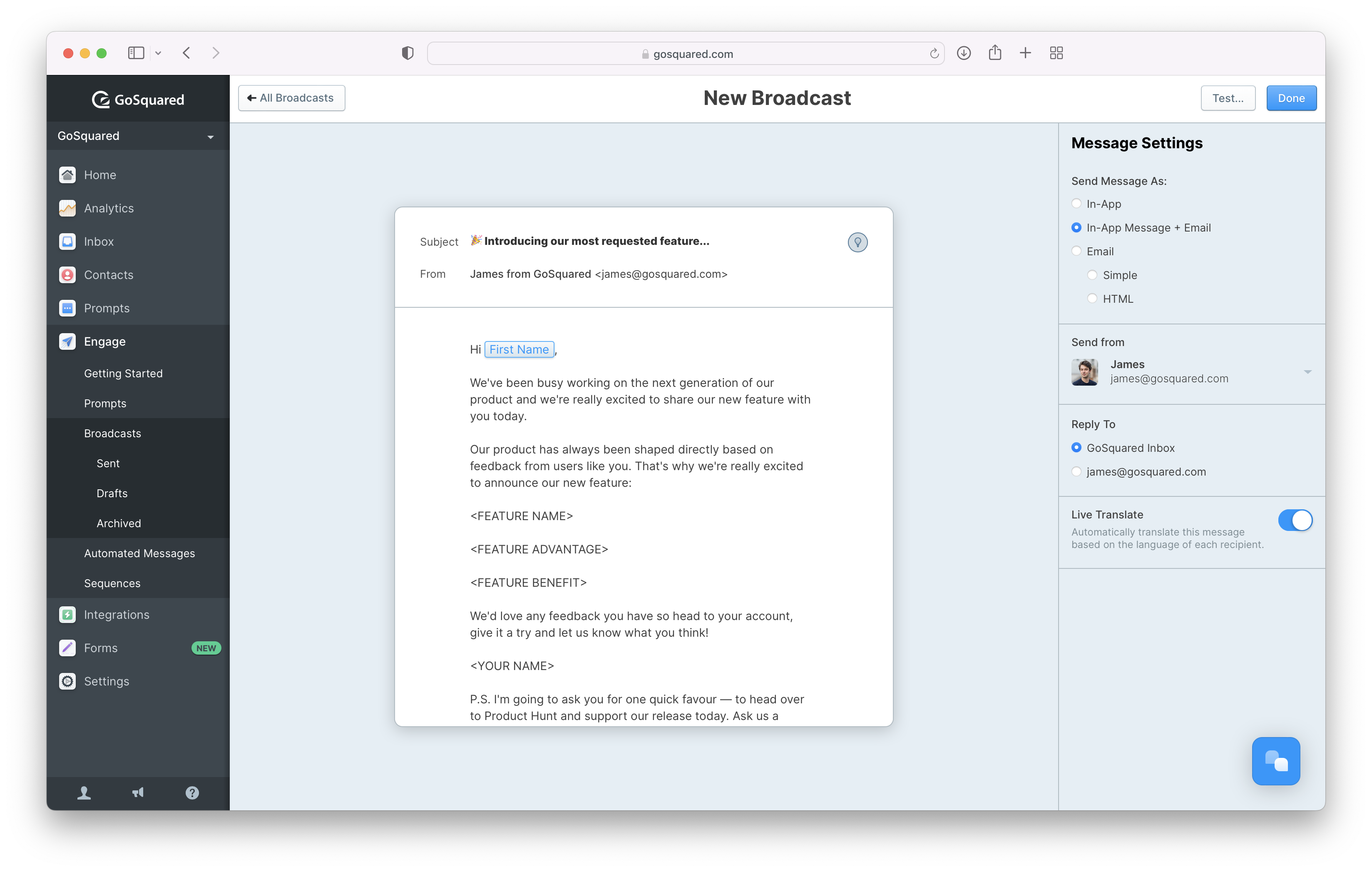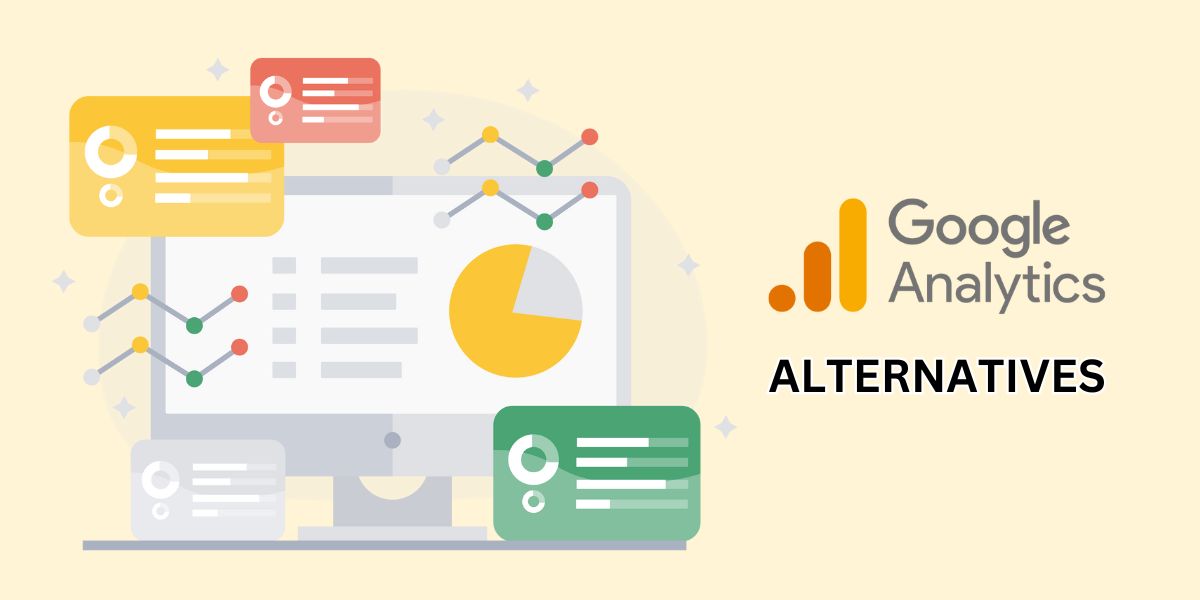There’s some things that we can all agree on are best served cold. Beer, ice cream and mayonnaise to name a few (although never together we should add). But when it comes to marketing your business, along with its products and services – is a cold email as enticing on a warm summer’s day, or at any time of year for that matter?
For the most part, no it isn’t. Yet the things always seem to turn up in our inboxes whether we like it or not. Trying to sell us every kind of service imaginable – cold email marketing campaigns are still being sent like it’s 1999. Only unlike Prince, nobody is partying, let alone parting with their cash when receiving such correspondence.
So why is a cold email still being used as the marketing method of choice? Could sending a cold email even majorly backfire for your business?
Grab your ice picks as we’re about to break into the topic of cold emails like never before.
Plus, you’ll discover how to send successful emails to prospects in a way that feels a little more human by stepping out of the freezer and into the warmth of meaningful customer engagement.
What is a cold email?
Depending on who you ask, a cold email is what makes it impossible to fully clear your email inbox. However, the official definition of a cold email is sending an unsolicited email without prior contact with the sender.
In layman’s terms, sending a cold email is contacting someone out of the blue and assuming they’ll immediately want what they didn’t know they needed and probably don’t need either.
When we think about the psychology of selling, the element of surprise and even potential annoyance doesn’t spring to mind as a winning tactic. Yet cold email marketing is still heavily relied upon to reach out to potential prospects.

By cold email, we don’t mean sending an email full stop, even if you’re reaching out to a stranger. Sometimes, it’s just not possible to have met the person before introducing yourself for the first time.
Instead, the true association of a cold email is:
- Generic impersonal opener
- No prior research of the prospect
- No interest as to whether the idea has relevance
- No value of the recipient’s time
Translation: All that matters is me the sender because I have a thing to sell and I need to get it sold. I don’t care how. I don’t even care if the email is well written. So long as it lands in your inbox I’ve done my job! 🤞…🤨
Ice factor of such cold emails: You’re in the Arctic.
Cold emails – why I blame Tom Hanks

“I turn on my computer. I go online and my breath catches in my chest until I hear three little words…you’ve got mail!” – Even Hollywood made us believe everyone wants to read our emails in the 1998 movie classic You’ve Got Mail.
Serenaded by the sound of your dial-up internet firing into gear, there was once a time when receiving an email – from anyone at all – seemed really exciting. Even the dog came bounding up to read the screen in the trailer.
Now, if Tom Hanks really was on the other end of the message, we’re sure this enthusiasm for every email we ever get sent would still be there in abundance. But he’s not. Furthermore, our relationship with email has changed since those early days of being wowed by the very ability to send an email in the first place.
Instead of being a novelty, email is now something most of us see as part of our daily grind. Keeping on top of work emails can be stressful at times, so having additional cold emails from marketers to deal with is definitely not going to alleviate this for us – especially if it’s something we really don’t want or need. Instead we’ll race to delete such messages in one big go just to clear our screens.
So why do some businesses still assume that so long as an email lands in their recipient’s inboxes, it’s enough to get the job done?
Let us make no mistake here. When done correctly email marketing has an average $36 ROI for every $1 spent. It’s truly amazing stuff.
But those who see these kinds of returns aren’t relying on the romanticised view of what email once was. Instead, the savviest marketers know their recipient is likely very busy, and definitely doesn’t have time for what they perceive as spam. So they put a little thought into what they send and how they do so.
Enjoying this post so far? ✉️ ➡️ Sign up to the free GoSquared newsletter to receive more posts like this one direct to your inbox.
Why is cold emailing bad? – The risks of sending a cold email
There are four main risks of sending a cold email, especially the typical way it’s done, in that emails are sent without tailoring the message or strategy specifically to your recipient.
These ‘risks’ are the reactions that a cold email is most likely to generate:
Annoy 😠 – The most common reaction a cold email will have is that it will annoy your prospect, especially as research suggests the average person receives 121 emails a day. Emails that practically scream at prospects to get them to listen don’t work because they are simply not a priority. Instead, they’ll go straight in the trash can while being marked as spam.
Intrude 🥷 – Have you ever received a cold email and thought, ‘what thing I subscribed to gave you my details, and how much did you pay for them?’ This is especially the case for newer websites or email addresses, or even personal addresses that you’ve been keen not to share. It feels like nothing is private anymore, and shows the sender will even toss GDPR in the bin to get a sale. It’s just not the way to encourage a meaningful connection.
Offend 😬 – By cold emailing anyone and everyone, you run the real risk of offending people. Whether you are trying to tell users you can do better with the services they already provide or want to sell them something based on outdated stereotypes you used to target them, it’s never a good look to offend people you are trying to turn into customers.
Upset 😢 – Worst of all, you could upset a potential prospect with your cold email, if you’re doing things the typical way where you don’t research prospects because you send emails out on-masse. Some topics are deeply personal, even if we don’t hold the same associations with a topic, service or even time of year ourselves. Without due diligence it’s impossible to know if you’re going to provoke such a reaction.
Now ask yourself if annoying, intruding on, offending or upsetting prospects is what will get people over the line? Or whether any of these reactions are even things you want your brand to be associated with?
Because cold email usually involves going in without a plan as a one-size-fits-all approach, it runs a real risk of any or all of the above.
Sending a cold email is the digital equivalent of doorstep selling
For those unaware, doorstep selling involves someone knocking at your home unannounced to try and sell you something. Often something you’ve never asked for, heard of, want or let alone need. Although doorstep selling is not illegal, the practice is deeply frowned upon due to its unscrupulous pressure selling techniques.
Like with a cold email, it’s common for someone to knock at the door to tell you that you ‘have a problem’ you didn’t even know you had, and that the person who stands before you is your knight in shining armour to fix it for you. It could be gutters, double glazing, driveways or your energy supply. But is this remotely welcome for most people? No it’s not.
Living in a busy residential area, there are a few doorstep selling incidents that stand out to me and neither of them are good. Like the major window company opening with “We’re NHS approved!” during the height of the pandemic. Their cleverly concocted spiel ensured people opened the door long enough so that they could take off their double glazing salesman cloak around 30 seconds in.
Or the national telecoms company who recently did the ‘frantic knock’ pattern at my door. When I opened it, in the middle of a hectic workday, they announced: “It’s nothing to worry about, but it’s just that your neighbours have reported…”
[immediately inserts every applicable scenario here that involves all emergency services and a 10-man news crew]
… “that their internet speeds are slow (yes despite most of them being in their late 90s). Don’t worry, as I’m here to fix that for you, by switching your internet provider for you today after just a few quick questions!”
When I reached out to the company to tell them this was a poor tactic indeed, I then got stuck on their automated survey response feedback forms, which then repeatedly sends another message if you don’t respond in 24 hours. Someone has told them this is good?
Not only are these companies not getting my money now, but by showing how badly they do business they’ll never get it either. In my mind as the prospect, I just think, why do you have to go to such measures to get my custom, if your product is so fantastic? It just doesn’t add up.
Given many online reviewers also lament their frustrations at being disturbed at their door or even on the phone in this same way, the question remains: Why are cold selling techniques still being used by companies, who want to build legitimate custom and loyalty? Don’t you know better exists?
So, is there ever a place for sending unsolicited cold emails?
Yes, there is. After all, you can’t always send an email to someone having met them in person or after connecting over social media first.
But context is the big thing here. Any email is always going to work better when you’ve done your homework. Most of all, your email must be genuine.
The problem is, too many simply seek to communicate with as many people as possible at all costs rather than taking the time to consider the recipient.
So no, we aren’t ruling out sending a thoughtful, tailored email to a potential employer or business interest even if you’ve never reached out before – but if you’re sending that same email to 1,000 others exactly as it, you can’t possibly expect to achieve the same response with each prospect.
Cold email red flags:
🚩 – The recipient hasn’t been addressed by their name
🚩 – The sender also doesn’t give their full name
🚩 – The sender doesn’t state their company or job title
🚩 – There is no sender contact information beyond a random Gmail account
🚩 – Googling the sender’s name leads to no authentic looking information
While there are always going to be exceptions to this rule, on the whole, any of the above doesn’t feel genuine. If the recipient’s first thought is, ‘are you a scammer?’ again, this is not going to turn someone into a customer.
Getting email marketing right

Email is and remains one of the best tools any business has at its disposal to connect, engage with and retain its customers.
But similar to trying to paint a masterpiece, it’s not going to happen just because you picked up a paintbrush. Instead, there is form and technique to consider, and email marketing follows this exact same mantra.
Carefully researched and developed since we started GoSquared back in 2006, here are some of our top winning strategies to try with your next email marketing campaign:
Audience segmentation
What we can say with absolute certainty is that treating every person the same in marketing just doesn’t work.
As well as stating cold calling has just a 2% success rate, Leadfuzz also tells its users: “Cold call sales professionals who are most successful reach out to prospects six times or more until they make contact.”
However, in our beginner’s guide to audience segmentation, you may recall we told you: “A core belief of ours here at GoSquared is that more engagement doesn’t come through sending more emails. In fact, quite the opposite is true. There’s really good research out there that shows the more you communicate, especially if you end up overcommunicating with your contacts, your engagement will go down. So, people will do things like unsubscribe or mark you as spam, and then you’ll have no way to engage with them at all. Therefore, audience segmentation is what helps us send more focus but with less messaging.”
✅ Audience segmentation = Sending the right message to the right person at the right time.
❌ Cold email = Send as many emails to as many people as possible. Hopefully someone eventually will respond.
(Or, they’ll unsubscribe, delete your message and block your email address, because you’ve appeared in their inbox without their permission and they can’t seem to get rid of you).
Customer engagement
Did you know that communicating with your customers is not the same as engaging with them?
Customer engagement isn’t about having a one-sided conversation with someone. Instead, it seeks to build meaningful relationships with your customers. It shows that you listen to them and that they are valued.
While customer engagement might be best associated with those you’ve already converted, it also doesn’t hurt to apply the same techniques to those who are yet to cross the line.
So instead of sending an impersonal email to someone you’ve never met making it all about you – what customer engagement techniques can you use to make it about them?
GDPR-friendly techniques
In the age of GDPR people are wary of receiving emails from people they have no prior knowledge of, and who can blame them?
If you are going to send an email to anyone at all – you must never get their email address through any method that may infringe on their privacy. Although to you it may show determination, to your recipient it will likely raise security concerns.
Companies with internal mailboxes may automatically filter the email as spam. Likewise, a company may have strict policies about responding to unsolicited external emails. The list goes on, and it’s not a good list you want to be on either.
Those who don’t know how to be GDPR-friendly really must brush up on the dos and don’ts first.
You must value your prospects and their time
The worst thing you can do when sending an email to a sales prospect is to make it all about you.
Think about it, first you’re contacting them out of the blue – possibly without their permission. You’re then presenting them with some kind of problem you’ve invented when they are probably already very busy with something else.
On top of this, you expect their immediate, undivided attention.
Casey Neistat once famously said that “free time is the enemy of progress.” It was at a time in Casey’s life when he was at the most productive in his career and often shared how he has to make every second count. Casey, like many others, does not have ample time to sit around and wait for emails to arrive, let alone spend time responding to each one. Casey actually deleted his mailbox from his website for this very reason, because so many people were cold emailing him and it became overwhelming to deal with.
So it makes sense that emails which appear to be a waste of time are those least likely to be read or replied to. What we know about sending cold emails very much fits this narrative because the very idea someone owes you their time more than anything else they may have going on is very presumptuous.
How to step out of the cold and into the warm with GoSquared

If you’re ready to leave cold email marketing behind as your main marketing strategy, especially if you’ve found it’s too time consuming or simply doesn’t give you the right results – now is the time to switch things up with GoSquared Engage.
GoSquared Engage doesn’t rely on old school techniques last seen in 90s movies. Instead, Engage is an incredibly intuitive tool that helps you create data-led email marketing campaigns that truly speak to your customers as humans. It factors in their wants and needs, and lets you know the best ways to engage with your users. We’ve helped customers from around the globe connect better with their users, and we’re here to help your business too.
So if you want to get better at capturing leads, onboarding new users and retaining your existing customers, GoSquared Engage has got you covered.
Start your free trial of GoSquared Engage today. You can also reach out to us at any time to chat with one of our sales engineers.
Let us know what aspects of your marketing you’d like to improve on, and we’ll show you how Engage can get you there.


